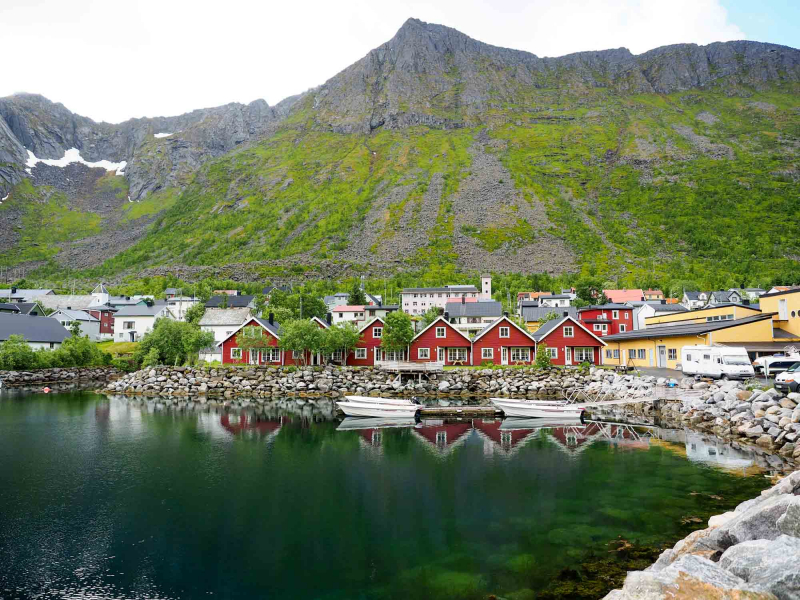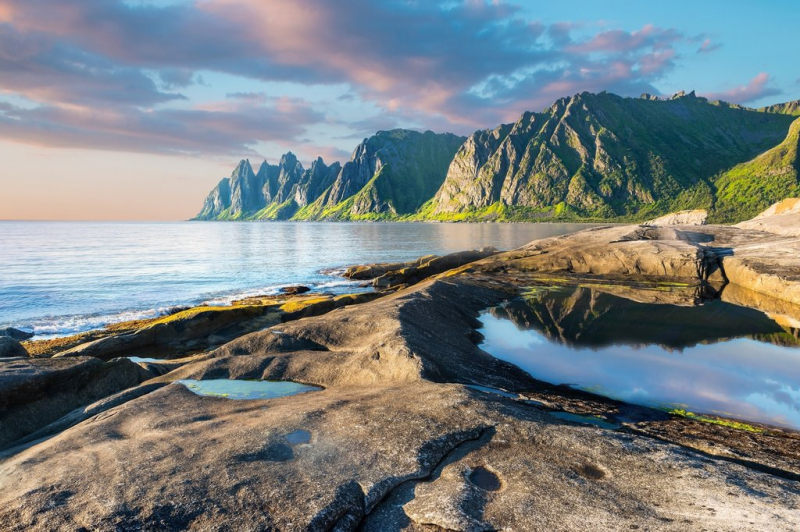Senja
Senja is a Norwegian island in the county of Troms og Finnmark. It is Norway's second-largest island, covering 1,586.3 square kilometers (612.5 square miles) (outside the Svalbard archipelago). It has a rugged, mountainous western (Atlantic) side and a calm, verdant inner (Eastern) side. Senja Municipality, which was founded on January 1, 2020, includes the island. As of January 1, 2017, the island of Senja had 7,864 residents. The majority of the population lives on the island's eastern shore, with Silsand being the largest city. The Andenes–Gryllefjord Ferry connects the fishing community of Gryllefjord on the West Coast with the neighbouring island of Andya during the summer months.
Senja's northern coast confronts the open sea, its western coast faces the Andya and Krttya islands, and its southern coast faces the Andrja and Dyrya islands. On the western coast, steep and Rocky Mountains rise directly from the sea, with some fishing settlements (such as Gryllefjord and Husy) nestled between the mountains and the sea. With rounded mountains, forests, rivers, and agricultural area, the island's eastern and southern regions are milder.
Senja is sometimes described to as "Norway in miniature" since the island's varied scenery depicts nearly the complete range of Norwegian natural topography. Arguably one of the most beautiful islands in Norway, Senja is touted as a tourist attraction in the United States because of its surroundings.
Anderdalen National Park, with coastal pine forests and mountains, traditional fishing towns, and the Senja Troll, the world's largest troll monument, are among the island's attractions (which burned down on 28 March 2019). The Halibut Museum ("Kveitmuseet") in Skrolsvik is one of several tiny museums chronicling local history in Trany's southernmost municipality.
Location: Troms og Finnmark, Norway












